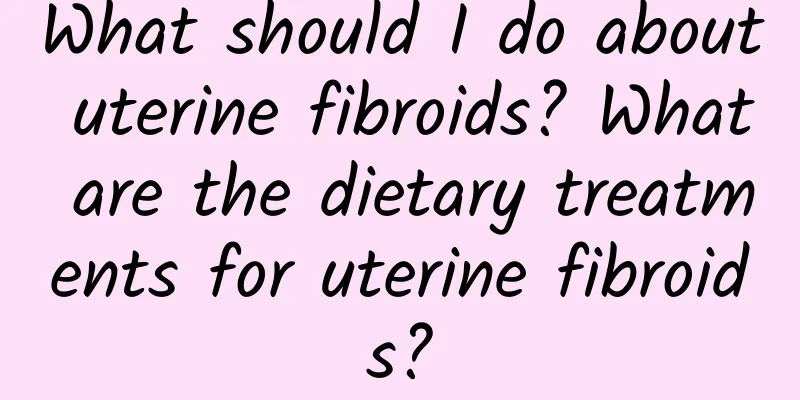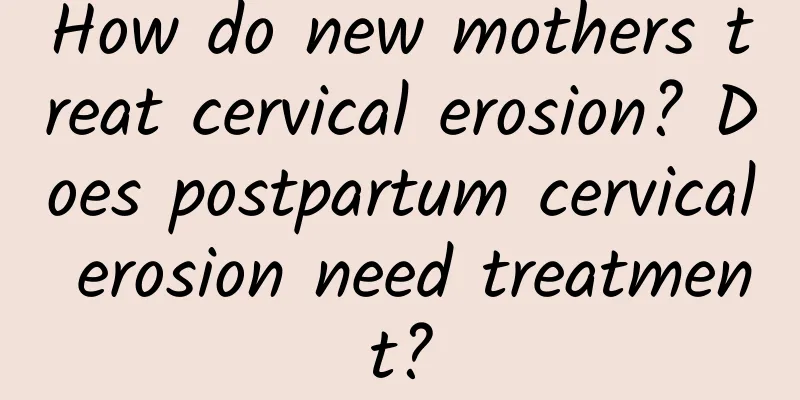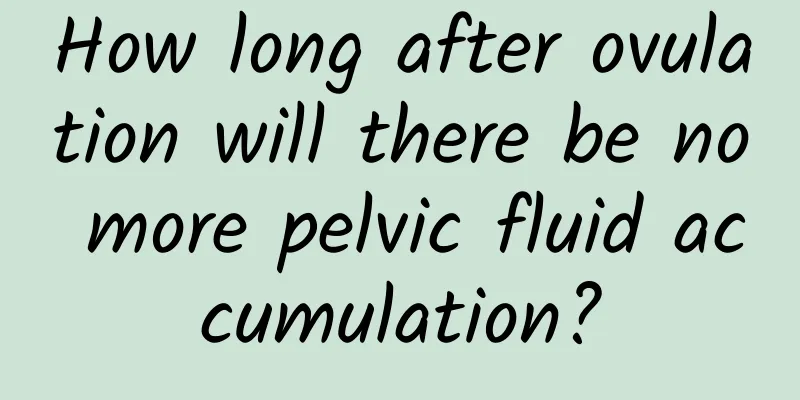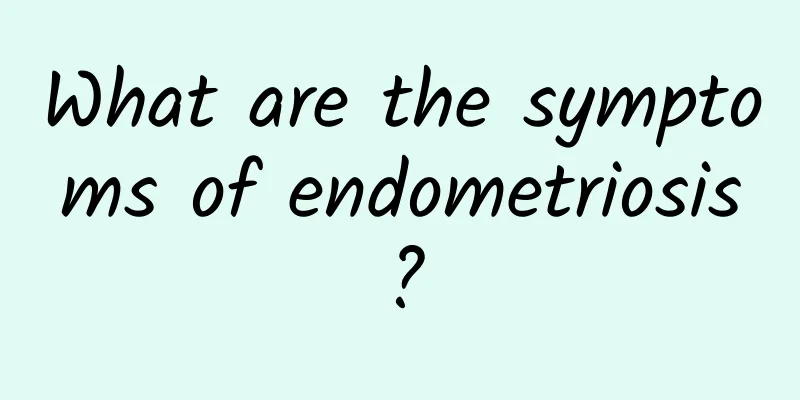How big is the uterine fibroid before surgery is needed? Treatment methods for uterine fibroids
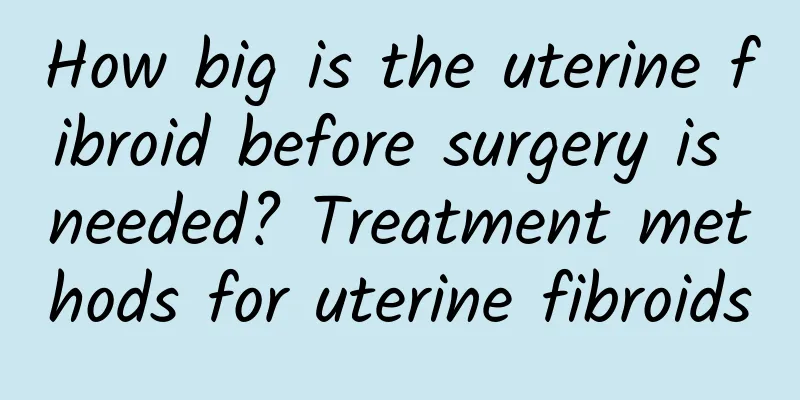
|
As for uterine fibroids, we all know that the incidence of this disease is very high. Many women say that this disease has a high incidence rate. We must pay attention to this disease and should learn more about the treatment of uterine fibroids so that we can treat this disease in a timely and effective manner and avoid the spread of the disease. 1. Follow-up observation If the patient has no obvious symptoms and no symptoms of malignancy, regular follow-up observation can be performed. 2. Drug treatment (1) Gonadotropin-releasing hormone agonist (GnRH-a) Commonly used GnRH-a in clinical practice include leuprorelin (Enanton), goserelin (Zoloft), triptorelin (Dapiga), etc. GnRH-a should not be used for a long time and is only used for preoperative pretreatment, generally for 3 to 6 months, to avoid causing severe menopausal symptoms caused by low estrogen; small doses of estrogen can also be supplemented to resist this side effect. (2) Mifepristone is a progesterone antagonist that has been clinically used in the treatment of uterine fibroids in recent years. It can reduce the size of fibroids, but the fibroids grow more after discontinuation of the drug. (3) Danazol is used for preoperative medication or to treat uterine fibroids that are not suitable for surgery. Uterine fibroids can grow after the drug is stopped. Taking danazol causes liver damage and androgenic side effects (weight gain, acne, deepening of the voice, etc.). (4) Tamoxifen can inhibit the growth of fibroids. However, it should be noted that some patients may experience an increase in the response of uterine fibroids, and may even induce endometriosis and endometrial cancer. (5) Commonly used androgen drugs include methyltestosterone (methyltestosterone) and testosterone propionate (testosterone propionate), which can inhibit the growth of fibroids. Pay attention to the dosage to avoid masculinization. During the bleeding period of patients with uterine fibroids, if the amount of bleeding is heavy, uterine contractants (such as oxytocin, ergot) and hemostatic drugs (such as hemostatic acid, aminobenzoic acid (hemostatic aromatic acid), lizhihemostasis, Panax notoginseng tablets, etc.) can also be used, which can play a certain degree of auxiliary hemostatic effect. 3. Surgical treatment Surgical treatment of uterine fibroids includes myomectomy and hysterectomy, which can be performed abdominally, vaginally, or endoscopically (hysteroscopy or laparoscopy). The choice of surgery and surgical method depends on factors such as the patient's age, fertility requirements, size of the fibroid, location of growth, and medical technology conditions. (1) Myomectomy: The surgery to remove uterine fibroids and preserve the uterus is mainly used for young women under 40 who wish to retain their fertility. It is suitable for patients with large fibroids, heavy menstruation, compression symptoms, infertility caused by fibroids, submucosal fibroids, and rapidly growing fibroids without malignant transformation. (2) Patients with obvious symptoms of hysterectomy, the possibility of malignant changes in fibroids, and no fertility requirements are suitable for hysterectomy. Hysterectomy can be performed by total hysterectomy or subtotal hysterectomy. Patients of older age are suitable for total hysterectomy. The possibility of cervical malignancy must be eliminated before surgery. (3) Uterine artery embolization uses radiological intervention to insert an arterial catheter directly into the uterine artery, inject permanent embolic particles, block the blood supply to the uterine fibroids, and achieve fibroid shrinkage or even disappearance. UAE is currently mainly suitable for uterine fibroids with symptoms such as anemia caused by abnormal uterine bleeding. When choosing interventional treatment for uterine fibroids, caution should be exercised, especially for patients with uncontrolled pelvic inflammation, patients who wish to retain fertility, arteriosclerosis, and contraindications to angiography should be listed as contraindications to this treatment. 5% of patients may have premature ovarian failure and rare pelvic infections after surgery. Focused Ultrasound Therapy The temperature inside the tumor is raised locally to above 65°C, causing coagulative necrosis of the tumor and exerting a therapeutic effect. The treatment can shrink the fibroids and relieve symptoms. It is suitable for symptomatic uterine fibroids. There are no surgical scars after treatment, and the advantages are fast recovery after surgery. Side effects include skin burns, intestinal damage, hematuria, etc. |
<<: Does uterine fibroids require surgery? What are the symptoms of uterine fibroids?
>>: How to perform surgery on uterine fibroids and what should patients eat after surgery
Recommend
What are the symptoms of endometrial thickening?
In recent years, the number of patients with endo...
Eat out to lose weight and avoid the three breakfast landmines
How important is breakfast? Entering the words &q...
Surgical methods for uterine prolapse
Surgical methods for uterine prolapse: Uterine pr...
How much does an abortion cost?
Abortion is a term that many women are familiar w...
Bacterial vaginosis diet taboos
Bacterial vaginosis is one of the most common gyn...
What dietary methods can cure cervical erosion? Ten foods have a therapeutic effect on cervical erosion
Cervical erosion is a gynecological disease that ...
Will small uterine fibroids affect conception?
Will small uterine fibroids affect conception? 1....
A simple analysis shows that injury is also the cause of cervicitis
In life, many people suffer from cervicitis. The ...
Pelvic inflammatory disease is more likely to occur in winter. How can we prevent it?
When winter comes, when faced with a choice betwe...
What are the dietary taboos for vaginitis
What are the dietary taboos for vaginitis? Vagini...
What causes cervical erosion in women? There are 4 tips for treating cervical erosion in women
Cervical erosion is an inevitable gynecological d...
The most common care methods for cervical warts
Cervical warts are sexually transmitted diseases,...
Is ectopic pregnancy contagious?
Is ectopic pregnancy contagious? Ectopic pregnanc...
What are the methods of traditional Chinese medicine for treating female Bartholinitis?
Traditional Chinese medicine is a relatively comm...
Why do you have to do a checkup before having an abortion?
For many women, abortion is the greatest pain in ...

